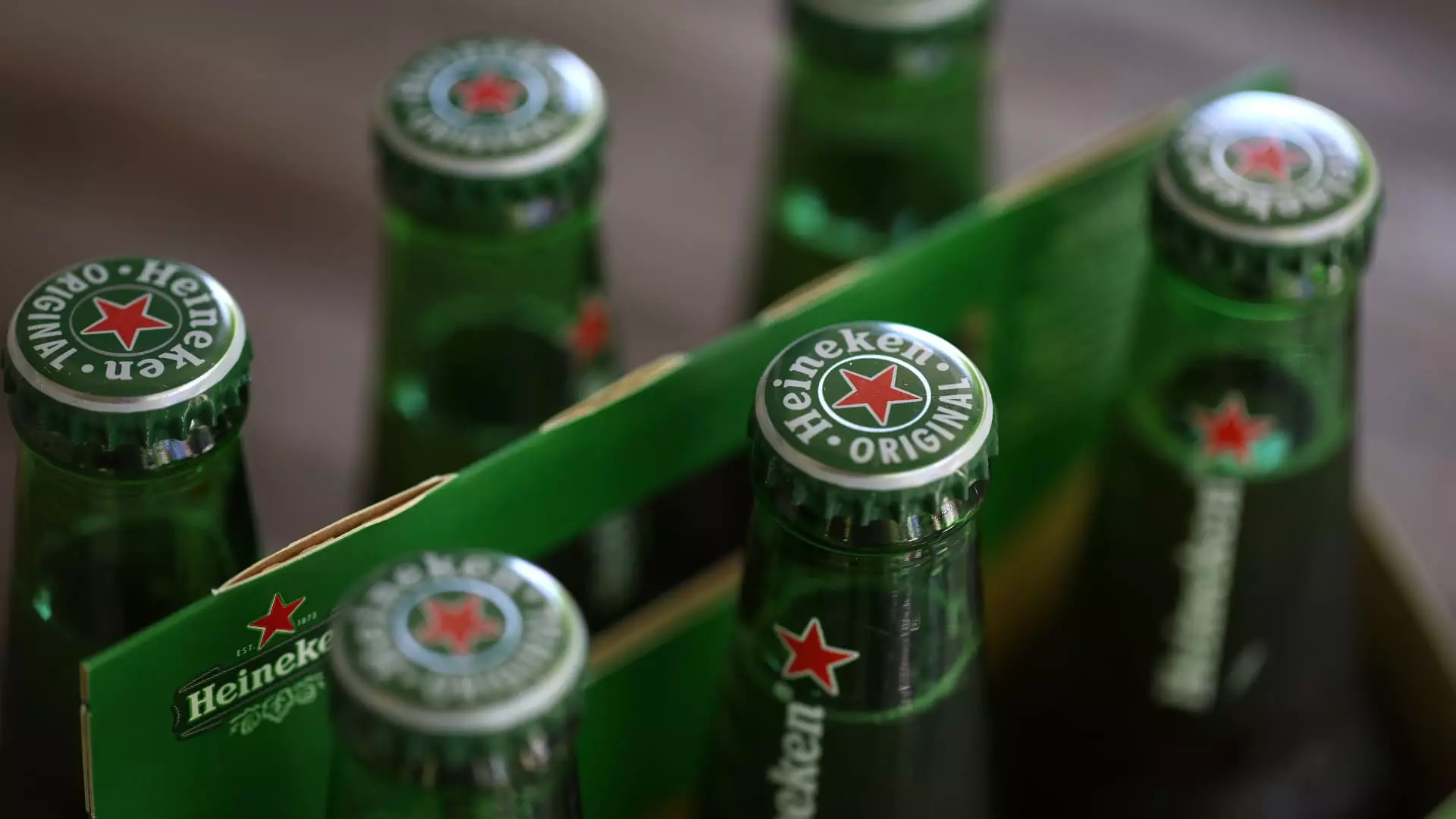Heineken, the brewing giant, experienced a nearly 7% drop in its shares following the release of weaker-than-expected first-half profit growth results. Analysts had predicted a better performance, but the company fell short of their estimates. Operating profit showed organic growth of 12.5%, missing the consensus forecast of 13.2%. Beer sales only rose by 2.1%, failing to meet the expected growth rate of 3.4%.
One of the major contributing factors to Heineken’s poor performance was a net loss of 95 million euro ($103 million). This loss was primarily due to a non-cash impairment of 874 million euro on its investment in the Chinese brewing firm CR Beer. The decline in CR Beer’s share price, caused by concerns about consumer demand in China, led to the write-down. Despite the loss, Heineken CEO Dolf van den Brink expressed satisfaction with the company’s overall performance in the first half.
In response to the disappointing results, Heineken revised its operating profit organic growth forecast for the year to a range between 4% to 8%. This adjustment was necessary to align the company’s projections with the actual performance. Analysts had been anticipating a better outcome, and the gap between the company’s messaging and expectations needed to be addressed. The European market presented a significant challenge, with only 0.2% profit growth compared to the expected 15.1%.
Despite the setbacks, Heineken managed to consolidate its leadership in the low and no-alcohol beer sales category. The no-alcohol beer Heineken 0.0 experienced a 14% increase in sales, reflecting a growing trend in the market. Van den Brink highlighted the importance of this category for the company’s future growth, especially emphasizing Heineken 0.0. Market research indicates a strong potential for growth in low and no-alcohol products, surpassing the broader alcohol industry in the coming years.
One positive note from the report was the significant reduction in input costs for Heineken. Van den Brink mentioned that input costs in Europe and the Americas were much lower compared to the previous year. This allowed the company to implement less pricing changes, focusing on achieving a balance between volume and pricing growth for revenue. The favorable input cost situation provided Heineken with an opportunity to adjust its revenue strategy for better results in the future.
Heineken’s disappointing first-half results and subsequent stock decline highlight the challenges faced by the company in the competitive brewing industry. Despite the setbacks, Heineken remains optimistic about its future prospects, especially in the growing low and no-alcohol beer market. Adapting to changing consumer preferences and market trends will be crucial for Heineken to maintain its position as a global industry leader.

